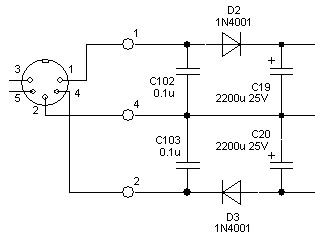two prongs,three prongs.. thanks tesla for ac.
rereading thierrys's second post on this thread about grounding etc. european wallwarts have just two prongs, ground is by the amp, mixer provided. i spent last summer some time with my etherwave and a non grounded small amp (line6 spider) in a remote area. no way to get it working properly, until i used a car charging cable, that one with big clamps, and clamped that between the jack (a metalic neutrik) and that ground-screw for the turntable at the back of the stereo. i thought about using a unused three prong power plug and just use the ground connected to a cable with a crocodile-clamp, to be prepared for another poor grounded situation.
sadly, a local music shop is closing down & now he sells all instruments and lots of stuff like din plugs etc. for cheap. just bought a bunch of microphone nuts, i use them instead of the expensive atlas solution. my new etherwave-board should arrive soon, so i'll have my old one for experiments. since i need a second power supply too, i'll build one myself. power transformers are plenty around at the local thrift-store, etc. it just takes some efforts to find a good one.
edit: dewster, good points of mentioning the danger of electricity. even 500mA can become letal, so i was told by a old electrician.



